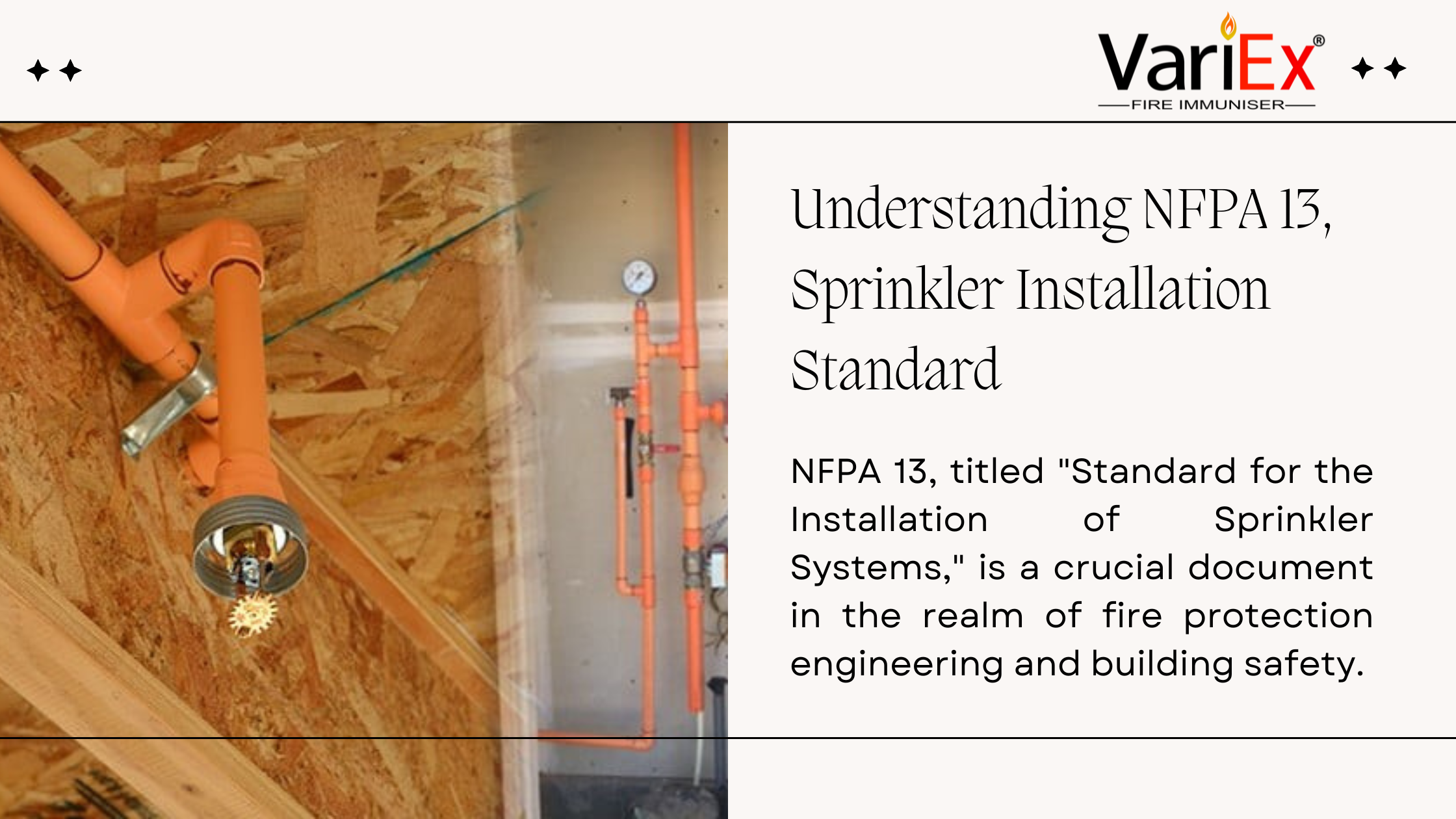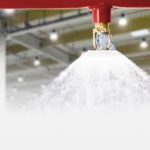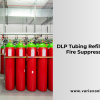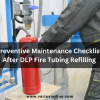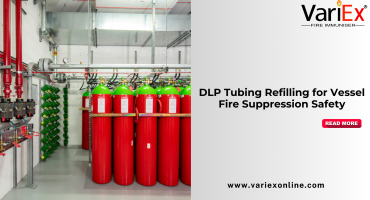![]()
Fire Immuniser
+91-7829629111
Email: info@variex.in
Varistor Technologies Pvt. Ltd.
Block-1, First Floor, Ardente Office One, Hoodi Circle, ITPL Main Road, Bengaluru, Karnataka 560048, IN
Understanding NFPA 13, Sprinkler Installation Standard
Frequently Asked Questions
NFPA 13 is a standard developed by the National Fire Protection Association (NFPA) that provides guidelines for the design, installation, and maintenance of automatic fire sprinkler systems. It aims to mitigate the impact of fire by controlling or suppressing its spread, thereby protecting life, property, and the environment.
NFPA 13 applies to engineers, architects, contractors, building owners, fire protection professionals, and regulatory authorities involved in the design, installation, inspection, testing, and maintenance of automatic fire sprinkler systems in various structures, including residential, commercial, and industrial buildings.
NFPA 13 addresses various types of sprinkler systems, including wet pipe, dry pipe, pre-action, deluge, and foam-water systems. Each system type is suited for specific applications and hazards, such as freezing temperatures, high-piled storage, or special process areas.
NFPA 13 categorizes buildings into different occupancy classifications based on their use and occupancy characteristics. These classifications, such as residential, mercantile, storage, industrial, and assembly, influence the design and installation requirements of sprinkler systems.
NFPA 13 addresses various design considerations, including occupancy classification, sprinkler types and characteristics, water supply requirements, pipe material and sizing, special hazards and challenges, and integration with building systems. Designers must consider these factors to ensure the effectiveness and reliability of sprinkler systems.
Final Say
At VariEx.in and VariexOnline.com, we specialize in supplying and installing top-quality fire fighting systems and equipment. From fire extinguishers to advanced suppression systems, we offer comprehensive solutions tailored to your needs. Our experienced team ensures precise installation and maintenance for optimal safety.
Trust VariEx for reliable fire protection. Contact us online or call 7829629111 to learn more.
"WHAT YOU CAN READ NEXT"
 Read more +24 November 2023 in Fire Extinguisher
Read more +24 November 2023 in Fire ExtinguisherWhat types of fire extinguishers are available for different fire classes?
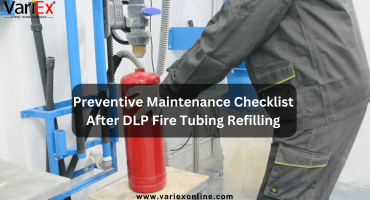 Read more +11 July 2025 in Fire Suppression
Read more +11 July 2025 in Fire Suppression

